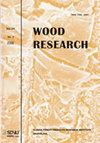UHF RFID标签天线在纸基板上的热转印和喷墨打印比较
IF 1
4区 农林科学
Q3 MATERIALS SCIENCE, PAPER & WOOD
引用次数: 4
摘要
采用热转印和喷墨技术在传统和实验涂布纸上印刷超高频射频识别天线,由于表面粗糙度高而不导电。通过涂层和随后的压延工艺,降低了纸的表面粗糙度,从而降低了热转印和喷墨印刷天线的电阻。以颜料沉淀碳酸钙为主要成分,添加聚乙烯醇、阳离子聚合物PDADMAC和乙二醛,在表面涂覆功能涂层,制备了用于铝天线和银天线热转印和喷墨印刷的纸张。通过使用涂布纸和聚乙烯醇阻挡层和顶部功能亲水性层,实现了喷墨印刷银天线的理想质量。喷墨油墨的银纳米颗粒需要烧结过程才能获得导电的印刷痕迹。比较了热转印技术和喷墨技术打印的天线的微观结构和厚度。与喷墨印刷相比,热转印产生了更均匀的天线,绘制的清晰度更高。本文章由计算机程序翻译,如有差异,请以英文原文为准。
Comparison of thermal transfer and inkjet printing of UHF RFID tag antennas on paper substrates
UHF RFID printed antennas on conventional and experimentally coated papers by thermal transfer and inkjet technique were not conductive due to high surface roughness. Reducing the surface roughness of paper and hence the electrical resistance of the antennas printed by thermal transfer and inkjet printing was achieved by coating and subsequent calendering process. Papers for thermal transfer and inkjet printed of aluminum and silver antennas were prepared by coating with top functional coating, whose main component was pigment precipitated calcium carbonate with addition of polyvinyl alcohol, cationic polymer PDADMAC and glyoxal. The desired quality of inkjet-printed silver antennas was achieved by using coated paper with a polyvinyl alcohol barrier layer and a top functional hydrophilic layer. Silver nanoparticles of inkjet ink require a sintering process to obtain a conductive printed trace. The microstructure and thickness of antennas printed by thermal transfer and inkjet technique were compared. Thermal transfer printing created a more homogeneous antenna with greater sharpness of drawing compared to inkjet printing.
求助全文
通过发布文献求助,成功后即可免费获取论文全文。
去求助
来源期刊

Wood Research
工程技术-材料科学:纸与木材
CiteScore
2.40
自引率
15.40%
发文量
81
审稿时长
5.4 months
期刊介绍:
Wood Research publishes original papers aimed at recent advances in all branches of wood science (biology, chemistry, wood physics and mechanics, mechanical and chemical processing etc.). Submission of the manuscript implies that it has not been published before and it is not under consideration for publication elsewhere.
 求助内容:
求助内容: 应助结果提醒方式:
应助结果提醒方式:


